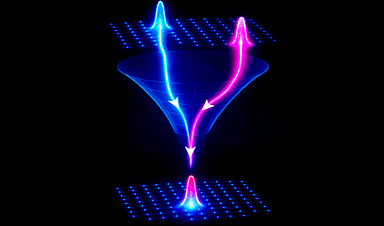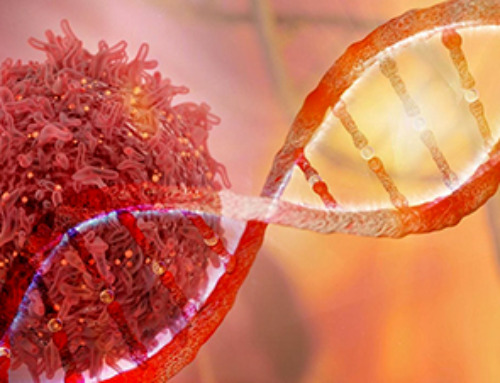H5N1 influenza is evolving rapidly, weakening the effectiveness of existing antibodies and increasing its potential threat to humans.
Scientists at UNC Charlotte and MIT used high-performance computational modeling to analyze thousands of viral protein-antibody interactions, revealing a decline in immune response effectiveness. Their research suggests that H5N1 mutations may soon enable human-to-human transmission, raising pandemic concerns. The virus has already spread among wild birds, poultry, cattle, and even farmworkers, emphasizing the need for swift vaccine development.
H5N1's Rapid Evolution Poses a Growing Threat
A research team at the University of North Carolina at Charlotte has used advanced computational modeling to study how the H5N1 bird flu virus interacts with the immune system. Their findings show that the virus is evolving in ways that help it evade immune defenses, whether from past infection or vaccination, in mammals.
Published on March 17 in eBioMedicine (a journal within The Lancet family), the study highlights urgent concerns. As avian influenza continues to spread globally, it poses not only a serious risk to agriculture but also an increasing threat to human health.
Worsening Antibody Affinity Raises Concerns
The researchers found a clear trend: antibodies are becoming less effective against newer strains of H5N1. This "worsening antibody affinity" suggests that future versions of the virus may be even more difficult for the immune system to recognize and fight, raising the risk of transmission to and among humans.
The study's lead author is Colby T. Ford, Ph.D., a visiting scholar in data science at UNC Charlotte's CIPHER center and founder of Tuple, LLC, a biotechnology consulting firm based in Charlotte.
Crucially, Ford explains, this rapid adaptation means that "if one makes an H5N1 vaccine with a previous vaccine candidate virus, the vaccine will have less efficacy, based on our measurements of how much the virus has evolved in recent years" As such, the team's research approach provides guidance for keeping pace with a rapidly adapting viral threat.
The team from UNC Charlotte's Department of Bioinformatics and Genomics includes students Shirish Yasa, Khaled Obeid, and Sayal Guirales-Medrano, led by Bioinformatics Assistant Professor Richard Allen White III, Ph.D., and CIPHER Co-Director Daniel Janies, Ph.D. who is the Carol Grotnes Belk Distinguished Professor of Bioinformatics and Genomics. The UNC Charlotte team collaborated with researchers from the Massachusetts Institute of Technology: Rafael Jaimes III, Ph.D., and Phillip J. Tomezsko, Ph.D.
Antigenic Drift and Increased Zoonotic Risk
By examining the virus' rampant host-shifting and recent mutations comprehensively, researchers find "the continuous transmission of H5N1 from birds to mammals and the increase in strains with immuno-evasive HA in mammals sampled over time suggest that antigenic drift is a source of zoonotic risk."
In the paper, "Large-scale computational modeling of H5 influenza variants against HA1-neutralising antibodies," the UNC Charlotte research team shares their results from analysis of 1,804 viral protein-host antibody comparisons. The experiments consisted of current hemagglutinin domain 1 viral proteins computationally bound in physics models to neutralizing antibodies obtained from infected hosts and vaccine recipients from 1996 to 2018.
Computational Modeling Reveals Alarming Trends
Using high-performance computational modeling, CIPHER researchers documented "a trend of weakening binding affinity of a wide variety of existing antibodies, collected from vaccinated and or infected hosts, against H5 viral isolates over time."
Due to the public health importance, the findings were available via preprint publication in July 2024 prior to successful peer review. Due to the computational tools they had assembled during the SARS-CoV-2 pandemic, the team was able to complete this work on H5N1 just three months after the first reported cow-to-human transmission of H5N1, which was reported in a farmworker in Texas.
In assessing the possible pandemic risk spurred by H5 bird flu spread and mutation, global researchers agree that "the avian virus (remains) high on lists of potential pandemic agents," as reported in Science in December 2024.
H5N1 Cases Surge in Mammals and Poultry
As of this writing, no human-to-human transmission has been reported. However, cattle in at least 17 states have tested positive for H5N1 in addition to millions of cases among wild birds, small mammals, commercial chickens, and other flocks. Between January 2022 and March 2025, the Centers for Disease Control reported:
- 12,510 outbreaks among wild birds in the U.S.
- 51 jurisdictions with bird flu among wild birds.
- 166,417,923 poultry affected
- 70 human cases of H5N1, one fatal, in the U.S.
The H5N1 virus, according to the World Health Organization, has killed 466 people worldwide since January 2003.
Speed Crucial to Combat a Fast-Adapting Virus
Vaccines, many experts say, will likely be a crucial tool in controlling a bird flu pandemic, as mutations of viral lineages adapt to new mammal hosts.
In eBioMedicine, the research team from Charlotte writes that their findings "indicate that the virus has potential to move from epidemic to pandemic status in the near future."
The study – along with other research that confirms worsening antibody binding over time alongside increased avian-to-mammalian transmission – indicates "there is an impending danger to human health for highly pathogenic strains of H5 influenza that can infect avian and mammalian livestock and jump to humans."
Avian Influenza can already be considered a pandemic among wild and domesticated animals due to the virus' pervasive spread across geography and species. Likewise, the spread of H5N1 from wild birds to chickens, dairy cattle, and farm workers illustrates the opportunism of infections across species.
Now, UNC Charlotte's computational modeling results "specifically assert that the worsening trend of the antibody performance along with the already present animal pandemic is a cause for concern for an eventual human pandemic."
Computational Modeling: A Key Tool for Preparedness
Further, the authors write that high-performance computing – which in this case included AI-based protein folding and physics-based simulations of viral protein-antibody interactions – provides rapid and reliable results to inform leaders in preparedness.
Janies, in a recent interview, explained the utility of computational modeling as a means of understanding viral mutation as well as predictive thinking concerning how a virus is evolving.
High-performance computational modeling, Janies said, is a pathway for "chipping away at multiple angles of biological variation at speed and scale" to "tune our intuition to the right approaches" for vaccine efficacy and infection control as viruses evolve.
Reference: "Large-scale computational modelling of H5 influenza variants against HA1-neutralising antibodies" by Colby T. Ford, Shirish Yasa, Khaled Obeid, Rafael Jaimes, Phillip J. Tomezsko, Sayal Guirales-Medrano, Richard Allen White and Daniel Janies, 17 March 2025, eBioMedicine.
DOI: 10.1016/j.ebiom.2025.105632
The protein modeling research on H5N1 viral lineages conducted at UNC Charlotte was funded by an Ignite grant from the UNC Charlotte Division of Research. Research used genetic data and metadata from GISAID, the Global Initiative on Sharing All Influenza Data, and the United States National Institutes of Health's GenBank.
News
New nanomedicine wipes out leukemia in animal study
In a promising advance for cancer treatment, Northwestern University scientists have re-engineered the molecular structure of a common chemotherapy drug, making it dramatically more soluble and effective and less toxic. In the new study, [...]
Mystery Solved: Scientists Find Cause for Unexplained, Deadly Diseases
A study reveals that a protein called RPA is essential for maintaining chromosome stability by stimulating telomerase. New findings from the University of Wisconsin-Madison suggest that problems with a key protein that helps preserve chromosome stability [...]
Nanotech Blocks Infection and Speed Up Chronic Wound Recovery
A new nanotech-based formulation using quercetin and omega-3 fatty acids shows promise in halting bacterial biofilms and boosting skin cell repair. Scientists have developed a nanotechnology-based treatment to fight bacterial biofilms in wound infections. The [...]
Researchers propose five key questions for effective adoption of AI in clinical practice
While Artificial Intelligence (AI) can be a powerful tool that physicians can use to help diagnose their patients and has great potential to improve accuracy, efficiency and patient safety, it has its drawbacks. It [...]
Advancements and clinical translation of intelligent nanodrugs for breast cancer treatment
A comprehensive review in "Biofunct. Mater." meticulously details the most recent advancements and clinical translation of intelligent nanodrugs for breast cancer treatment. This paper presents an exhaustive overview of subtype-specific nanostrategies, the clinical benefits [...]
It’s Not “All in Your Head”: Scientists Develop Revolutionary Blood Test for Chronic Fatigue Syndrome
A 96% accurate blood test for ME/CFS could transform diagnosis and pave the way for future long COVID detection. Researchers from the University of East Anglia and Oxford Biodynamics have created a highly accurate [...]
How Far Can the Body Go? Scientists Find the Ultimate Limit of Human Endurance
Even the most elite endurance athletes can’t outrun biology. A new study finds that humans hit a metabolic ceiling at about 2.5 times their resting energy burn. When ultra-runners take on races that last [...]
World’s Rivers “Overdosing” on Human Antibiotics, Study Finds
Researchers estimate that approximately 8,500 tons of antibiotics enter river systems each year after passing through the human body and wastewater treatment processes. Rivers spanning millions of kilometers across the globe are contaminated with [...]
Yale Scientists Solve a Century-Old Brain Wave Mystery
Yale scientists traced gamma brain waves to thalamus-cortex interactions. The discovery could reveal how brain rhythms shape perception and disease. For more than a century, scientists have observed rhythmic waves of synchronized neuronal activity [...]
Can introducing peanuts early prevent allergies? Real-world data confirms it helps
New evidence from a large U.S. primary care network shows that early peanut introduction, endorsed in 2015 and 2017 guidelines, was followed by a marked decline in clinician-diagnosed peanut and overall food allergies among [...]
Nanoparticle blueprints reveal path to smarter medicines
Lipid nanoparticles (LNPs) are the delivery vehicles of modern medicine, carrying cancer drugs, gene therapies and vaccines into cells. Until recently, many scientists assumed that all LNPs followed more or less the same blueprint, [...]
How nanomedicine and AI are teaming up to tackle neurodegenerative diseases
When I first realized the scale of the challenge posed by neurodegenerative diseases, such as Alzheimer's, Parkinson's disease and amyotrophic lateral sclerosis (ALS), I felt simultaneously humbled and motivated. These disorders are not caused [...]
Self-Organizing Light Could Transform Computing and Communications
USC engineers have demonstrated a new kind of optical device that lets light organize its own route using the principles of thermodynamics. Instead of relying on switches or digital control, the light finds its own [...]
Groundbreaking New Way of Measuring Blood Pressure Could Save Thousands of Lives
A new method that improves the accuracy of interpreting blood pressure measurements taken at the ankle could be vital for individuals who are unable to have their blood pressure measured on the arm. A newly developed [...]
Scientist tackles key roadblock for AI in drug discovery
The drug development pipeline is a costly and lengthy process. Identifying high-quality "hit" compounds—those with high potency, selectivity, and favorable metabolic properties—at the earliest stages is important for reducing cost and accelerating the path [...]
Nanoplastics with environmental coatings can sneak past the skin’s defenses
Plastic is ubiquitous in the modern world, and it's notorious for taking a long time to completely break down in the environment - if it ever does. But even without breaking down completely, plastic [...]





















